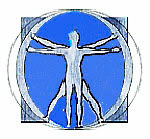I started a new assignment implementing an internal community site. That got me to thinking about how are communities different from the other information sharing techniques, such as web, SharePoint, etc. A glance at a social networking site reveals a set of features and functions that are not unique or, in some cases, not very impressive. Social networks are a form of knowledge management systems. They are also content management systems. They are also information sharing and collaboration systems. We see email functions, blogs, web pages, tagging (adding Meta data), RSS (Real Simple Syndication), WYSIWYG editors, etc.
These have been around, in some form, for some time. It is not the specific features or combination of features that are unique and different. It is the context and point of view that have made social networking sites popular. With the previous tools (web pages, content management systems, knowledge management systems, file folders, etc) someone set up the hierarchy and structure based on a corporate point of view. This could be an information architect (if you were lucky). More likely, there is no defined structure and naming conventions. Even if this was easy to learn, intuitive, and everyone in the organization could quickly understand and use it, as more information and documents are added becomes a big problem.
Adding a search engine, tagging documents, and storing virtual links (or worst copies) in multiple places are only bandages. The real problem is that people think differently. Memory is experience based. People sort and categorize information by comparing to new experiences to what they already know. Social networking has tapped into that by shifting the context from a document definition or business process view to providing users with tools to add, label, and link content based on their frame of reference, themselves.
People do not think of themselves as lines on an organization chart. Almost all work is cross functional, team based, or project focused. Social networking supports this, starting with the user profile. A number of knowledge management projects in companies tried to capture the information about skills and experience. They had limited success because they started with the corporate view and labels. Then people were told to fit into the predefined slots. The user profile in a social networking system is how you think about you.
The other key to success is providing the tools to allow information to find you instead of you having to track it down. A document and data centric view makes you figure out how things are labeled, where they are stored, and if you have access to the right systems. Using tagging, RSS, and email notification, a social network provides a simple set of tools to enable information to find you. Unlike a web page or a database, where the Meta tags are not readily visible, with social networks, all the tags are visible, along with a ranking of each. That allows a user to see quickly how others categorize the content they are entering and to map those terms to terms they use.
Friday, September 12, 2008
Subscribe to:
Posts (Atom)


